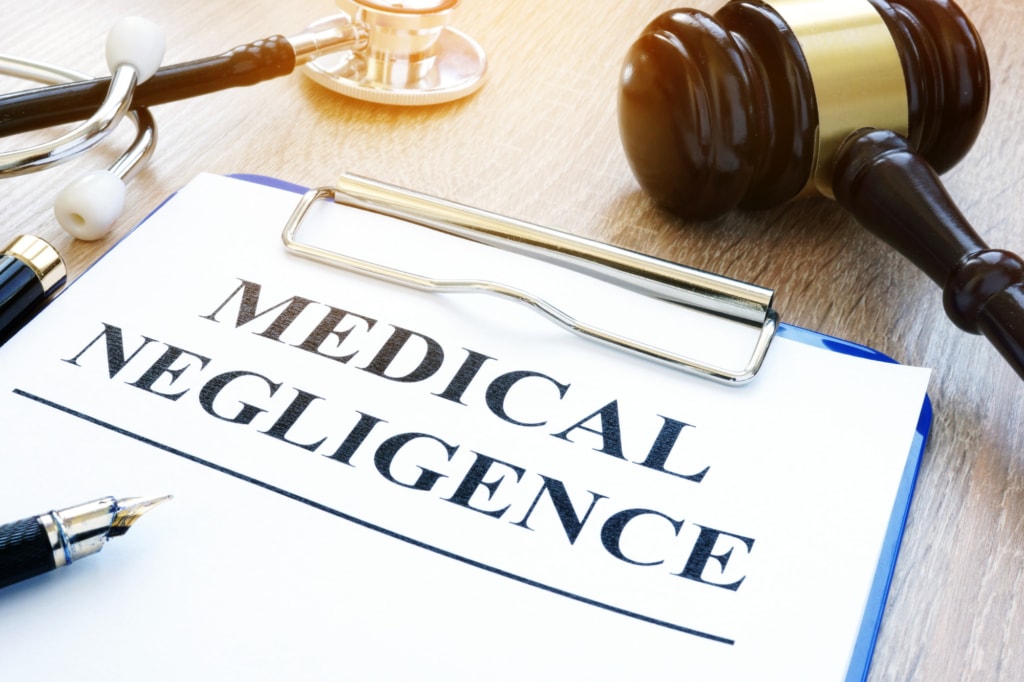
It’s estimated that more than 250,000 people die each year from medical errors. Errors from medical treatments are the third leading cause of death, behind heart disease and cancer.
When you seek medical care from your doctor or hospital, you assume they’re well-trained and will provide your care with the utmost caution and care.
So, how does medical negligence occur so frequently? What constitutes medical negligence, and what should you do if you think your doctor has incorrectly treated you?
Read on to learn more about medical negligence, including how it could occur.
What Is Medical Negligence?
Medical negligence occurs when the standard of care that a patient expects isn’t met, and as a result, they suffer the consequences.
Medical negligence can cause a patient’s condition to worsen, they are harmed in a new way, or the patient dies.
This happens when a medical caregiver fails to provide the proper care or doesn’t manage the patient’s protocols. This can happen from any number of medical caregivers, including:
- Doctor
- Hospital
- Nurse
- Psychiatrist
- Pharmacist
Medical caregivers must follow a required duty of care. If they fail to do so, it can lead to potential medical negligence.
Medical Negligence Vs. Medical Malpractice
You’ve probably heard of cases of both medical malpractice and medical negligence. How are they different? Are they the same?
When medical malpractice and medical negligence occur, they’re considered a type of personal injury to the patient. This area of personal injury law allows the impacted patient to seek compensation for the mistreatment in care.
Both medical malpractice and medical negligence refer to the mistakes made by medical professionals who are charged with a patient’s care. In most cases, medical malpractice and negligence are generally considered the same.
Who Can Be Sued for Medical Negligence?
There are many people involved in the treatment of any one patient, and any one of those people might make a critical error that could create a negative impact resulting in medical negligence for the patient.
So, you might wonder, is it only a doctor who’s held accountable in the case of a medical error?
The list of who is held to that duty of care is long and includes nearly anyone who provides medical care or medical support. You might have a lawsuit against any of the following for negligent care:
- Treating physicians
- Surgeons
- Medical specialists like a urologist or OB/GYN
- Nurses, both registered nurses and practical ones
- Anesthesiologists
- Pharmacists
- Psychiatrists
- Medical technicians
- Dentists
- Hospitals
- Care facilities
- Nursing homes
In medical negligence cases, multiple parties are commonly named in a lawsuit.
Requirements for a Medical Malpractice Suit
If you’ve suffered a medical mistake, you might be anxious to file a lawsuit. You’ll want to discuss the merits of your case with an experienced lawyer.
It takes more than just a mistake to qualify for a suit. Let’s take a look at the criteria needed to be eligible for a medical negligence lawsuit legally.
Existing Relationship With Medical Professional
The first criterion is that you have an existing relationship with the doctor or care provider. In most cases, this is pretty straightforward to show.
If you go to the hospital and your surgeon makes a mistake, it’s easy to show the relationship between you and the doctor previously existed.
Sometimes, it can be tricky if a doctor or medical caregiver is called in for a consultation. They make a mistake in their advice. The patient may not have directly contacted the consulting medical care provider responsible for the negligence.
Negligent Actions
Many patients will seek medical treatment for a condition, and maybe the outcome isn’t what they hoped it might be.
For example, you may have an ankle injury. The doctor performs surgery on the injured ankle. Your post-surgery results show not much improvement in the function of the ankle.
It doesn’t mean the doctor did something wrong during surgery. Instead, you might not be happy with the outcome.
The second requirement is that:
- There was an expected medical standard of care expected from the doctor or other healthcare provider
- The provider deviated from that standard of care, resulting in negligence
For most patients, this is where an attorney’s expertise is critical. You understand the bad outcome. They know how to prove the missing standard of care that resulted in negligence.
Injury
Finally, the evidence must be that an actual injury occurred due to the medical caregiver. This might include:
- Additional physical pain
- Additional mental anguish
- Unexpected medical bills
- Extended inability to go to work
- Lost earning capacity
While for some patients, this part of a case seems straightforward. This can be the trickiest area of a medical negligence case.
When you see a doctor or go to the hospital, you already have a medical condition. The case hinges on whether the medical provider demonstrated conduct, negligent or not, that caused the patient harm.
Types of Medical Malpractice
Medical negligence cases hinge on the fact that a doctor or other medical professional failed to perform their duties and responsibilities correctly, resulting in further injury or harm to the patient.
There’s a wide range of medical malpractice cases. Let’s take a closer look at some of the most common types of medical negligence cases.
Failure to Diagnose
Medical diagnostic errors are one of the most common types of medical negligence cases. This occurs when there are:
- Failure to diagnose a medical condition
- Incorrect diagnosis of disease or illness
A missed diagnosis can mean a patient doesn’t get treatment, and their condition could worsen. If a patient is misdiagnosed, the wrong medical therapies could be administered, which might also adversely affect the patient’s health.
Surgical Errors
As many as 4,000 surgical errors occur in operating rooms across the US each year. These errors can cause a worsening condition or even death for a patient.
Surgical technology has helped reduce the risk of surgical error. However, surgeons can make mistakes. Human error accounts for the vast majority of surgical errors for patients.
Don’t be fooled by the notion of minor surgery; these errors can happen in simple and complex procedures.
Nursing Home Injuries
Another common place where medical negligence could occur is in a nursing home. Patients needing long-term care and the elderly are particularly susceptible to negligence.
Sadly, this demographic of patients is also one of the least able to speak up about potential negligence in care.
Missed treatments or mistreatment can be missed without someone carefully advocating on their behalf.
Birth Injuries
Another of the most common types of medical negligence is from birth injuries. This is not when a baby is born with a medical condition. Instead, something during the birthing process is mishandled, resulting in the baby or mother suffering.
This could occur because of:
- Waiting or not performing a C-section when one is needed
- Not monitoring the oxygen levels in the newborn baby
- Epidural issues
- Premature cutting of the umbilical cord, which causes oxygen deprivation in the baby
- Missed fetal distress from labor and delivery
When a doctor misuses the tools associated with birthing a baby, including forceps or extraction vacuums, a baby or mother could suffer creating medical negligence.
Pharmaceutical Errors
All prescriptions used to get written by hand on a prescription pad or in medical orders. The errors that resulted from those were often associated with unreadable handwriting.
Now, prescriptions are often entered electronically into a computer. This can create another set of potential errors if the doctor misenters the dosage or prescription time frame.
Likewise, a medical professional administering a prescription could make an error in the dosage, causing medical malpractice.
Improper Anesthesia Administration
Patients who enter the hospital for surgery usually receive some form of anesthesia. Another typical medical malpractice case is associated with the improper administration of anesthesia.
Some of the most common errors associated with anesthesia include
- Doctors with little experience
- Improperly labeled or unlabeled syringes
- Missing drug allergy information
- Substituting medications
- Improper dosage
- Improper pump use
- Failure to record a patient’s history
While this could occur with patients in an operating room, it can also occur for patients receiving bedside treatments and care, too.
Nursing Errors
Since nurses are on the front line of care, they, too, are often involved in medical negligence cases. Like a doctor, they have the duty of care responsibilities to provide correct and careful care to the patient.
Nursing errors can often be as impactful as a doctor’s negligence. Nursing negligence can occur when a nurse doesn’t correctly record administered medication.
They might misuse a medical instrument that causes harm. If a nurse doesn’t follow the orders provided by the doctor, they would be considered negligent, and it would likely impact the patient.
Some nurses have faced medical negligence cases when they fail to check on patients regularly.
Medical Malpractice Settlements
Medical malpractice or negligence cases can be tricky. Medical professionals rarely want to admit any guilt, knowing how it could impact their careers in the future.
Negotiating with insurance companies without the case going to trial is often the best guarantee for a settlement. The amount of the settlement is typically based on several factors, including:
- The severity of injury or harm caused by the negligent actions
- The egregious or overt obviousness of the healthcare professional’s error
A settlement can also be impacted by how much liability coverage the provider’s insurance company makes available.
State-Level Malpractice Requirements
One thing you should know and spend some time discussing with your attorney is the specific state-level laws and requirements associated with a medical negligence case.
All states are slightly different, depending on where you’re filing a claim. Many states have statutes of limitations for how long you can wait before filing a claim.
The reality is the more quickly you can seek legal counsel and file your claim, the better access you’ll have to evidence and witnesses.
Some states require that a patient must submit a claim and meet with a malpractice review panel before they can file a legal claim.
Some states also require as part of a lawsuit that there be an affidavit of merit with it. This document would certify that a medical professional has reviewed your case and believes medical negligence occurred.
If this were a requirement in your state, your attorney would know who to get to fulfill this requirement.
Finally, some states also put a limit or cap on the number of damages allowed to be awarded. It’s good to review your expectations with your attorney.
Getting Legal Help for Your Medical Negligence Case
As the patient, you might suffer the consequences of a doctor’s or medical caregiver’s errors. You know the actions were wrong and harmful.
When it comes to filing a medical negligence case, you need someone who knows the law and how to prove the wrongdoing.
The quicker you hire a wrongful death or medical negligence attorney, the better. They can talk to other people who may have been present.
The attorney can work to build a case and start the negotiation process with the involved insurance company to work toward a favorable settlement on your behalf.
Understanding Your Medical Negligence Case and How to Move Forward
Suffering from medical negligence at the hands of a doctor or medical professional who you trust can be traumatic and life-altering. You expect them to perform their duties to care for you, not harm you.
If you need an attorney to help with your medical negligence case in Tucson, AZ, we can help. Contact us today so we can learn about your case and get started fighting on your behalf.

![Horrific 2-Car Crash on US 50 Left 2 Minors Hurt [Lyon County, NV]](https://cdn-sweetlaw3.pressidium.com/wp-content/uploads/2024/03/how-do-police-determine-fault-in-an-accident.jpeg)
![Jacob Fuerte Dead in Tragic Vehicle Crash on 101 Freeway and Vineland Avenue [Los Angeles, CA]](https://cdn-sweetlaw3.pressidium.com/wp-content/uploads/2024/03/semi-truck-crash.jpeg)

